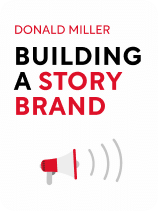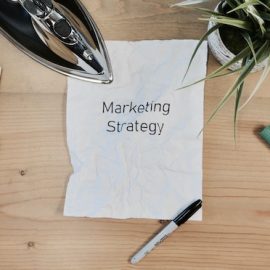

This article is an excerpt from the Shortform book guide to "Building a Storybrand" by Donald Miller. Shortform has the world's best summaries and analyses of books you should be reading.
Like this article? Sign up for a free trial here .
What are the different types of problems in a storybrand? Why does your brandscript need to have a problem?
When you’re building a storybrand, there are several different types of problems. You can set it up as a way for your customer, or “hero,” to overcome to get what they want.
Read more about the types of problems in a storybrand.
Types of Problems
The second of the seven story elements is the problem. In narrative, a problem is something that stands in the way of the hero getting what she wants. Problems engage the audience, maintain interest in the story, and make the audience more likely to trust the storyteller because they feel understood. (Shortform example: In the book The Paper Bag Princess, the dragon is the problem—the dragon burns all the princess’s possessions and kidnaps the prince she wants to marry.)
In branding, a problem is something the customer is frustrated by that your product or service can fix. (Shortform example: If you sell hand soap, the customer’s problem is that her hands are dirty, which creates a feeling of disgust.)
Problems are important to maintaining interest—without conflict, stories are boring. No one would keep watching. (Shortform example: Imagine that in the movie The Wizard of Oz, the wicked witch offered to give Dorothy a ride home after the first half-hour.)
First, we’ll explore how to create a villain strong enough to mobilize customers. Then, we’ll discuss the three problems your product or service should address, and how to write these problems (and their solutions) into your brandscript.
Create a Villain
Befor you larn the types of problems, you need a villain. A villain is the clearest way to focus conflict. The scarier and more powerful the villain, the more the audience wants to see them defeated. The villain doesn’t have to be a criminal mastermind in a mob boss chair stroking a cat, but human or not, villains need to be personified. For example, if you’re selling toothbrushes, the villain is plaque, and you might show a commercial in which plaque is an animated, talking blob that lives between your teeth. This makes a customer’s frustrations more concrete and calls on her imagination.
To harness the power of the villain for your brand, you need to cast your product or service as a tool the customer can use to take down the bad guy.
A villain needs to be:
- The source of the problem.
- For example, the feeling of exhaustion isn’t a villain—your loud neighbors who keep you up all night are.
- Recognizable. The villain should be obviously negative.
- For example, personified dust bunnies you need a particular type of vacuum to banish are clearly gross, and are therefore clearly the villain of your branding.
- Solo. Don’t choose multiple villains—this will cause confusion.
- Legitimate. There’s no need to fearmonger by making up a villain—there are enough real villains that you can recruit.
- For example, if you sell paper towels, an appropriate villain would be a mess. An inappropriate villain would be a global plague caused by that mess.
Now let’s jump into the three types of problems.
Three Kinds of Problems
There are three types of problems, and a strong villain causes all three at the same time:
Type #1: External. An external problem is a physical barrier between the hero and what she wants. These problems are the most straightforward to identify and solve.
- Story example: The Death Star in Star Wars is an external problem—it’s a powerful weapon that can destroy whole planets.
- Brand example: Not having a computer when you need one is an external problem. Apple can solve this problem by selling you a Mac.
Type #2: Internal. Internal problems are emotions, especially frustration, created by an external problem. In stories, the internal problem is nearly always self-doubt, which is relatable to any audience member.
- Story example: Luke Skywalker’s self-doubt is an internal problem—at the beginning of Star Wars, his uncle tells him he’s too young to make a difference. He struggles with feelings of inadequacy throughout the movie.
- Brand example: Part of the reason you might not have a computer is that you feel intimidated by technology, and that intimidation is an internal problem. Apple not only sells computers, they sell user-friendly, simple computers that you don’t need a computer science degree to use.
Type #3: Philosophical. Philosophical problems are universal problems that are represented in a particular story but have worldwide applications. Philosophical problems deal with fundamental injustices.
- Story example: When Luke blows up the Death Star (external problem), he proves that he was capable (internal problem), and saves the universe from evil (philosophical problem).
- Brand example: A philosophical problem might be the idea that everyone should have the right to express themselves and communicate with others. An Apple computer can help them do this.
Most companies are good at solving external problems. For example, if a customer is hungry, a burger joint can serve them food. However, customers are most interested in purchasing fixes for internal problems. Customers buy things because an external problem is creating an internal problem and they don’t want to feel stressed, annoyed, or frustrated anymore. The best brands fix both types of problems at once.
For example, the used car dealership CarMax knows that their customers need cars (external problem) and that dealing with a used car salesperson is stressful (internal problem) because she might rip them off. CarMax solves the external problem by selling cars and the internal problem by letting customers know that their salespeople don’t receive commission, they don’t haggle, and they inspect their cars for reliability.
Some brands address philosophical problems too. For example, by buying an electric car from Tesla, you can solve the external problem of lacking a vehicle. Additionally, you can solve the internal problem of needing status by becoming one of the first to adopt new technology. Finally, you can address the philosophical problem of climate change because an electric car is easier on the environment than a gas one.

———End of Preview———
Like what you just read? Read the rest of the world's best book summary and analysis of Donald Miller's "Building a Storybrand" at Shortform .
Here's what you'll find in our full Building a Storybrand summary :
- How storytelling enhances brand marketing
- Why you should make the consumer the hero of your brand's story
- The 7 elements that make marketing work






